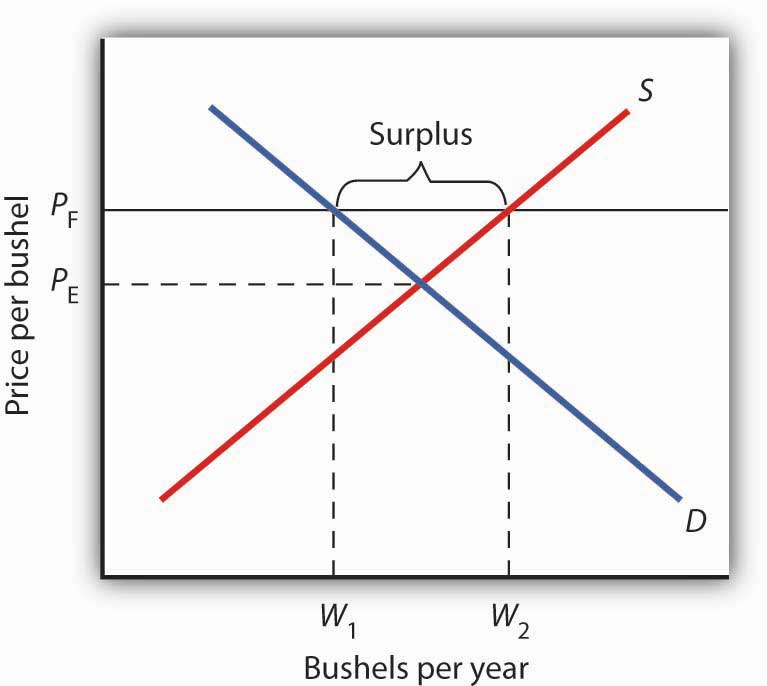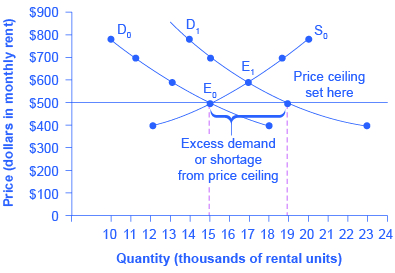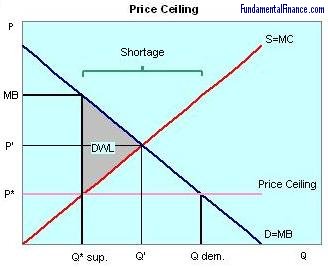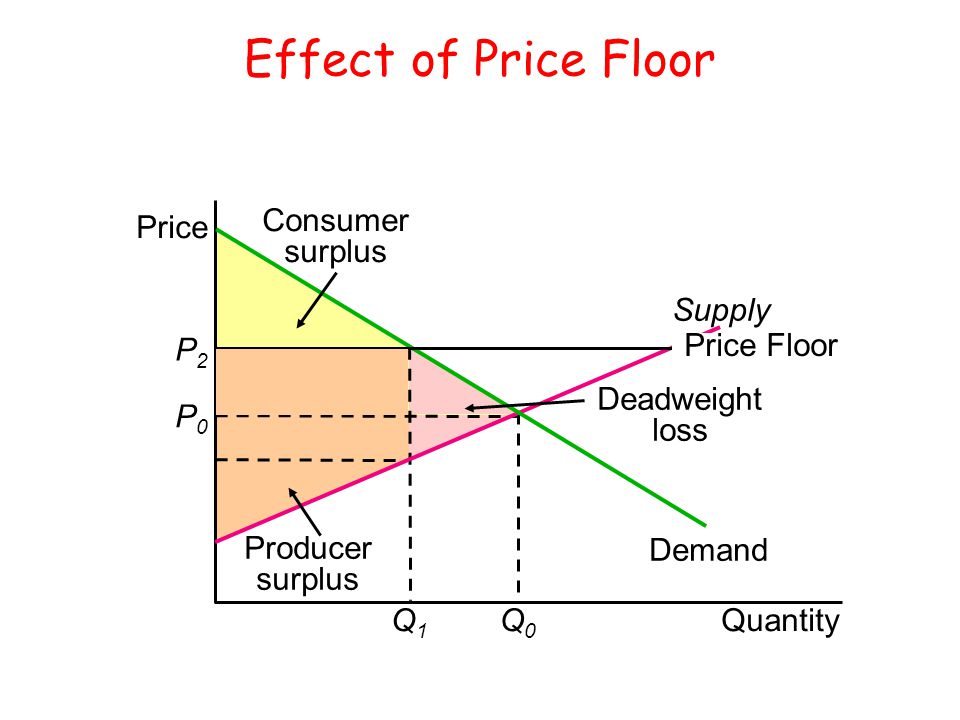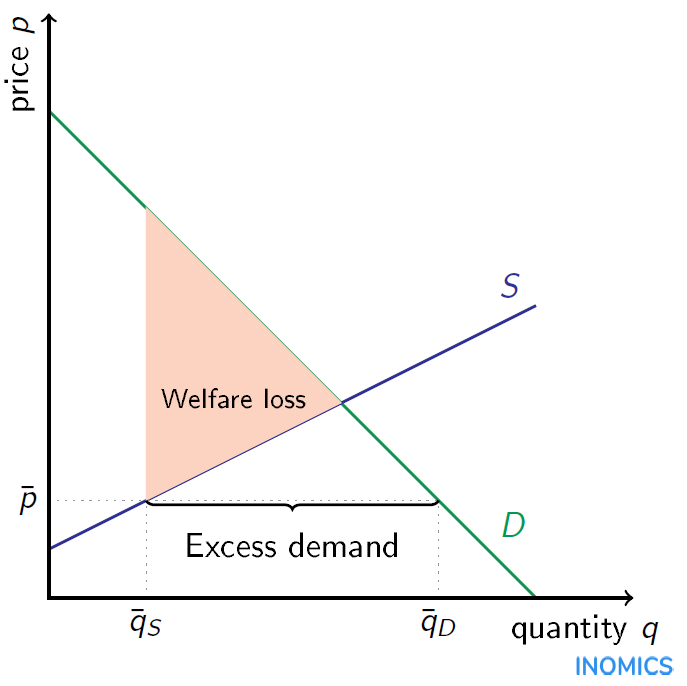Quantity Exchanged Price Floor

At the price floor the quantity demanded is less than quantity supplied which is a surplus situation.
Quantity exchanged price floor. When the price floor is set below the equilibrium. The quantity supplied at the price ceiling will equal the quantity exchanged. The result of the price floor is that the quantity supplied qs exceeds the quantity demanded qd. However a price floor set at pf holds the price above e 0 and prevents it from falling.
Example breaking down tax incidence. When quantity supplied exceeds quantity demanded a surplus exists. A price floor example. Minimum wage and price floors.
Price floors are used by the government to prevent prices from being too low. The effect of government interventions on surplus. Percentage tax on hamburgers. The amount exchanged in the market will be limited by the smaller of the two quantities q d in this case.
There are units that are socially efficient to trade but aren t traded because their value is less than the price floor. Price floors are also used often in agriculture to try to protect farmers. The quantity demanded at the price ceiling will equal the quantity supplied. Taxation and dead weight loss.
Price and quantity controls. Consequently at the price floor a larger quantity is supplied than is demanded leading to a surplus. In figure 5 5 a price floor the price floor is illustrated with a horizontal line and is above the equilibrium price. A price floor is only effective when set above the equilibrium price below left.
Taxes and perfectly inelastic demand. The result is a quantity supplied in excess of the quantity demanded qd. The intersection of demand d and supply s would be at the equilibrium point e 0. At equilibrium the quantity demanded is 700 units.
The most common price floor is the minimum wage the minimum price that can be payed for labor. When a price floor is set above the equilibrium price as in this example it is considered a binding price floor. A price floor is the lowest legal price a commodity can be sold at.







